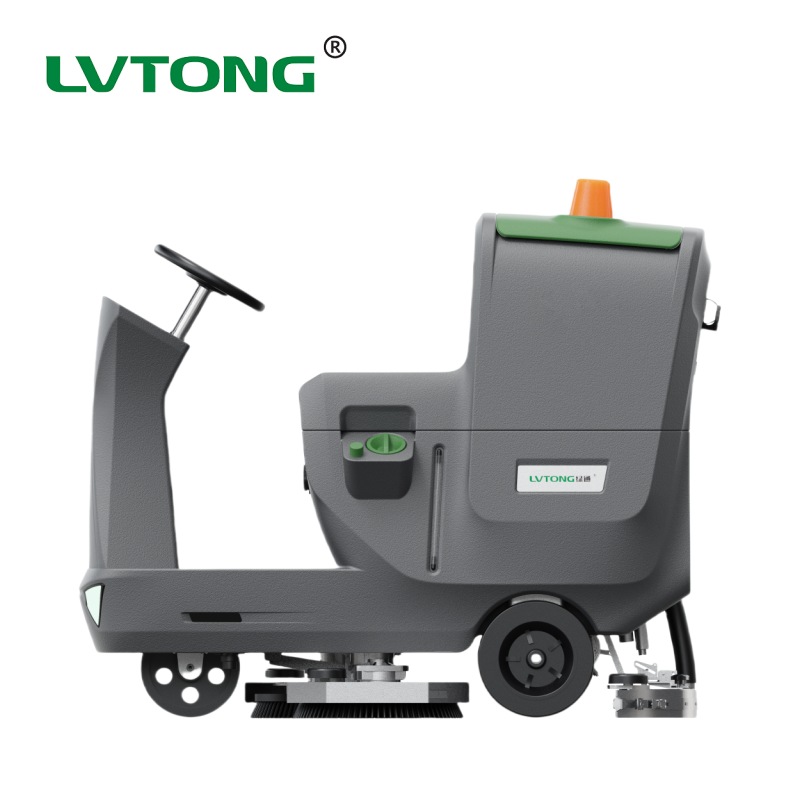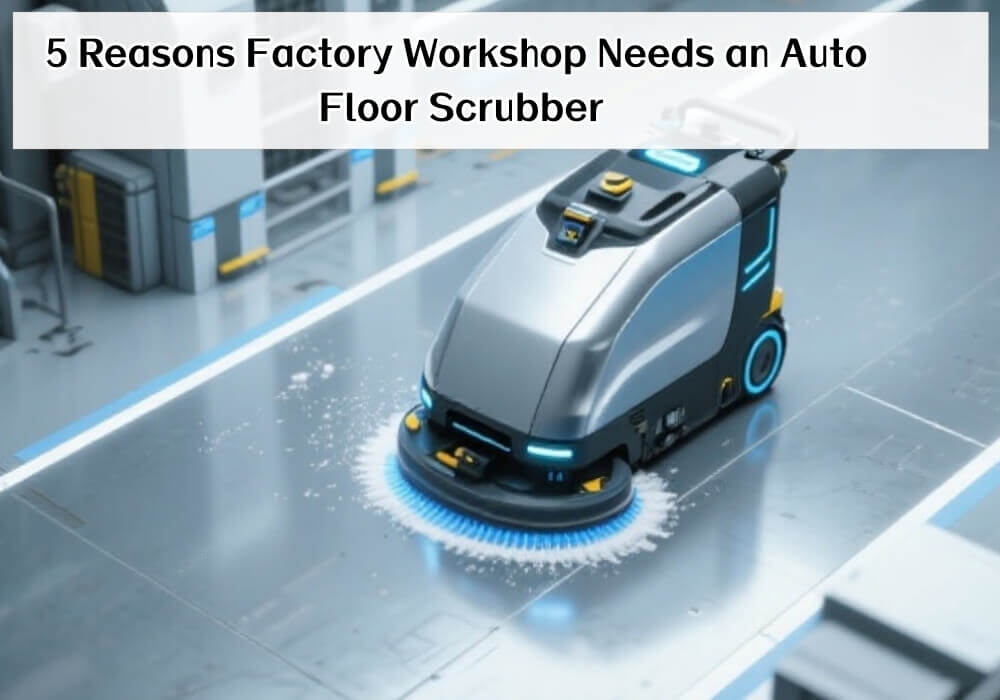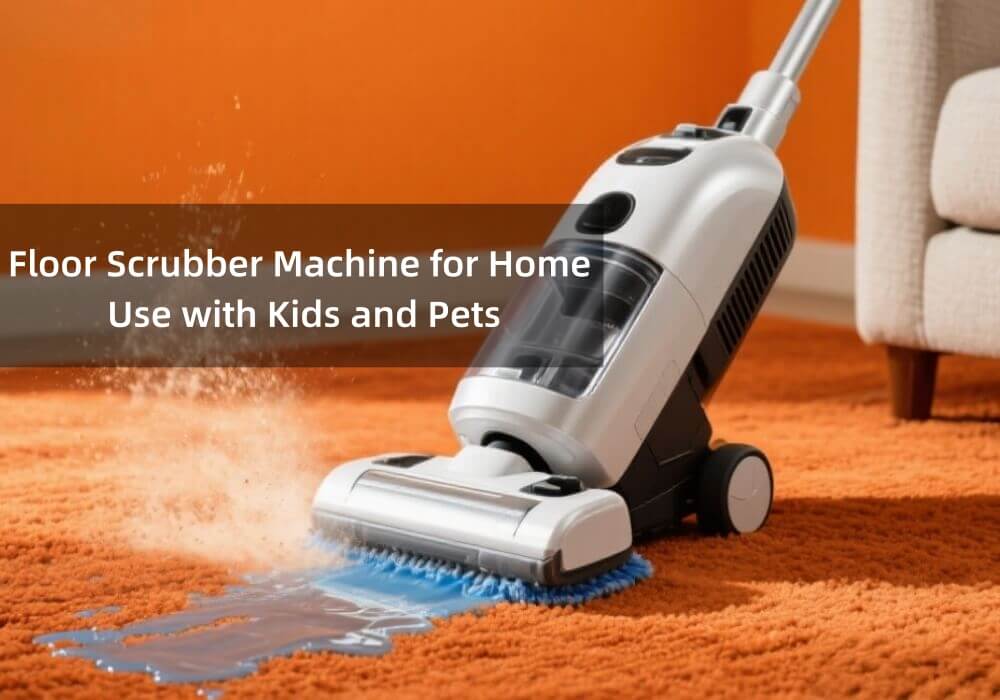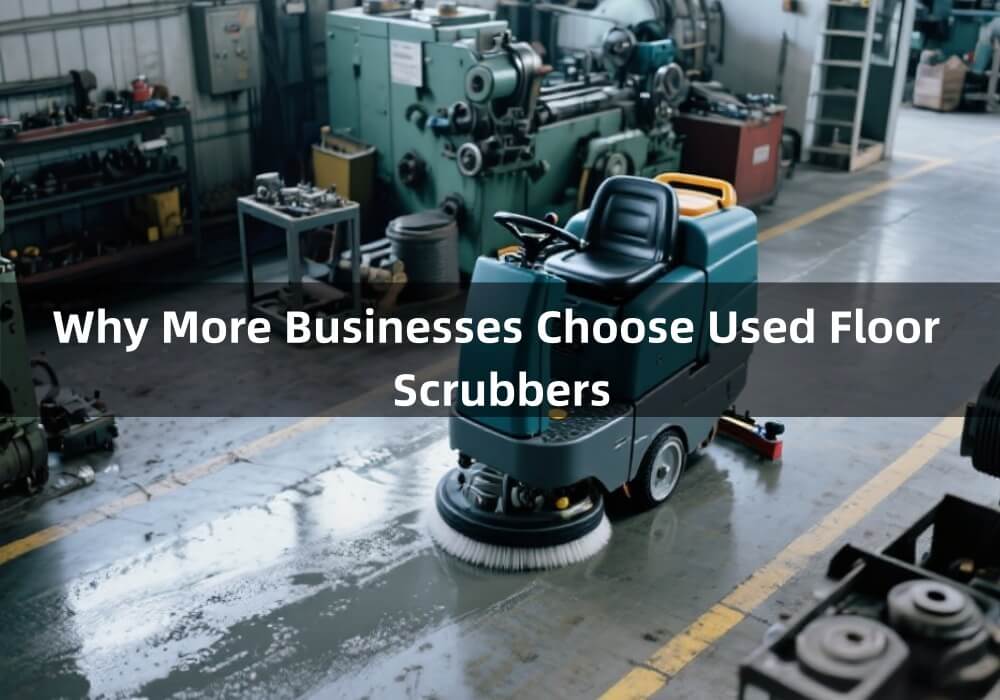Analysis of the Industrial Sweeper Industry

Industry Definition
Industrial floor sweepers, as professional cleaning equipment serving the industrial field, are mainly used for ground cleaning operations in large places such as factory workshops, logistics warehouses, and industrial parks. Unlike houseware sweepers, it has stronger cleaning capabilities, durability, and adaptability to complex industrial environments. In terms of classification, industrial floor sweepers can be divided into ride on floor sweepers, manual floor sweepers and fully automated floor sweepers.
Development History
The development of industrial floor sweeping machine has gone through multiple stages. In the early days, industrial cleaning mainly relied on manual cleaning, which was inefficient and labor-intensive. With the development of industrialization, mechanical driven sweeping machines have emerged.
It mainly uses mechanical rolling brushes and brooms to clean garbage, and the cleaning efficiency is much higher than manual labor. Subsequently, electric sweepers gradually became popular, with stronger cleaning power and more flexible operation.
In recent years, with the vigorous development of automation and intelligent technology, industrial sweeping machines are making great strides towards intelligence, efficiency, and environmental protection. Fully automatic intelligent sweeping machines are applied in daily life.
Market Analysis
Market Size
In recent years, the industrial floor sweeping machine market has shown a steady growth trend. In the past five years, the compound annual growth rate of industrial floor sweepers has been between 12% and 15%. This is a very high level of growth, indicating that the market is in a period of rapid development. In addition, by 2024, its market size has exceeded $700 million.
The growth is primarily driven by two factors. First, businesses are seeking to reduce costs and increase efficiency by replacing manual cleaning with industrial sweepers, significantly improving cleaning efficiency and reducing labor costs. Secondly, industrial modernization has led to expanded factory floor space and complex production environments, spurring a surge in demand for specialized cleaning equipment.
Competitive Landscape
The current industrial sweeper market is highly competitive, with a diversified landscape. Well-known brands such as Karcher and Tennant, leveraging their advanced technology and brand advantages, have established a dominant position in the high-end market. They are highly competitive in the mid- and low-end markets and in some specific industry application scenarios. In addition, many small and medium-sized brands are seeking development space in regional markets or niche areas, and market concentration needs to be further improved.
Technology
In terms of power systems, industrial floor sweepers currently primarily rely on lead-acid batteries, which offer the advantage of low cost. However, lithium batteries, with their high energy density, quick charging time, and long lifespan, are gradually gaining market share and have already fully replaced them in some high-end models. In addition, some high-end industrial sweepers are equipped with intelligent brush plate pressure adjustment systems, laser navigation, visual navigation and other technologies, which enable the sweepers to accurately locate, autonomously plan paths, and effectively avoid obstacles to achieve efficient cleaning operations.

Future Technology Trend
Intelligent
In the next 2 to 3 years, industrial floor sweeping machines will see further breakthroughs in intelligent navigation technology. Laser navigation technology will further enhance precision, allowing sweepers to sense environmental changes in real time and dynamically adjust their cleaning paths. It will not only enable efficient cleaning of large areas, but also significantly improve cleaning efficiency and coverage. For example, in large automobile manufacturing workshops, floor sweepers can intelligently plan cleaning routes based on the production line layout and vehicle flow, avoiding work areas and moving vehicles to achieve cleaning without dead ends.
Intelligent sensing technology will give industrial floor sweeping machines enhanced environmental awareness. Besides identifying common obstacles, they can also sense floor material, the type and extent of dirt, and even monitor environmental parameters such as air quality, temperature, and humidity. For example, a sweeper machine can automatically adjust the cleaning mode, cleaning force, water spray flow rate and other functions. In a food factory, the sweeper can automatically switch cleaning modes according to the different oil stains on the ground.
Industrial floor sweepers will feature a more user-friendly and intelligent interface. Equipped with a high-definition touchscreen, the machine offers a simple and intuitive user interface, allowing operators to easily set cleaning tasks, view device status, and obtain fault diagnosis information. Furthermore, the use of voice interaction technology allows operators to more conveniently operate the sweeper, and it can improve cleaning efficiency.
Environmental Friendly
In the future, lithium batteries will become more prevalent in industrial sweepers. Their energy density, range, and charging speed will be significantly improved. It is expected that within the next 2-3 years, the battery life of sweepers will reach 10 hours of continuous operation. It is meeting the needs of long-term continuous operation. In addition, hydrogen fuel cell technology will also be explored and applied in the field of industrial sweepers. Its advantages of zero emissions and high energy conversion efficiency are in line with the industrial field's pursuit of environmental protection and efficient power.
During the cleaning process, floor sweeper will use a more energy-efficient motor and control system to optimize operating power and reduce energy consumption. For example, intelligent speed regulation technology automatically adjusts the motor speed according to the cleaning load, avoiding unnecessary energy consumption. Moreover, the dust collection system will also be optimized in design to reduce fan power and energy consumption while ensuring efficient dust collection.
Industrial floor sweeping machines will increasingly incorporate recyclable materials, from the exterior to the internal components, to enhance their recyclability and reuse value. For example, recyclable plastics will replace traditional non-biodegradable plastics, metal components will be made from easily recyclable alloys, and product designs will be optimized for easy disassembly and recycling.
Customization
Demand for industrial sweepers varies significantly across industries. In the future, manufacturers will provide customized solutions tailored to the specific characteristics of each industry. In the chemical industry, sweepers must be explosion-proof and corrosion-resistant to address the risk of hazardous chemical leaks and corrosive environments. In the logistics and warehousing industry, floor sweepers are required to have large garbage holding capacity, high passability and fast charging functions to meet the needs of efficient cleaning of large warehouses.
In addition to industry customization, customers' needs for personalized functions will also be met. Businesses can customize the sweeper's functions based on factors such as their factory layout, cleaning procedures, and budget. For example: Customizing brush heads of special sizes to adapt to cleaning of narrow passages or irregularly shaped areas; adding disinfection and sterilization functions to meet the needs of medical and health facilities.
Customized after-sales services will become a key to market competition. Manufacturers will establish personalized after-sales profiles for customers. Based on factors such as equipment usage frequency and operating environment, customized maintenance plans will be developed to conduct regular equipment inspections, maintenance and repairs.
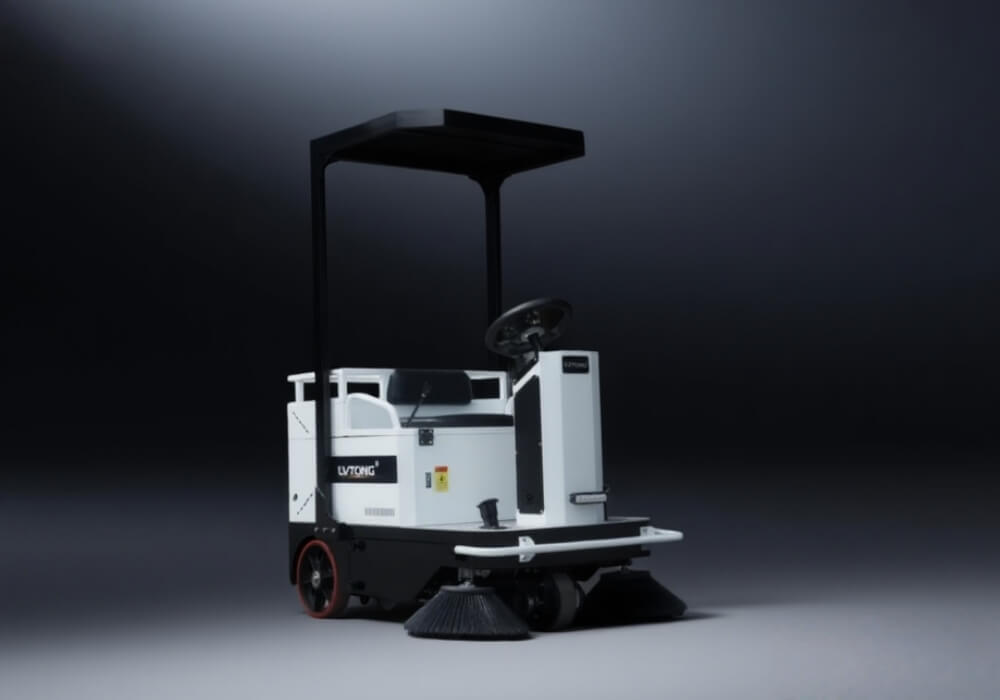
Policies and Regulations
Environmental Policies
Global attention to environmental protection will drive the development of industrial sweepers towards more energy-efficient and low-carbon technologies. Governments around the world are likely to introduce stricter energy consumption standards, noise limits, and emission requirements, prompting manufacturers to adopt environmentally friendly materials and clean energy. For example, the EU's Green Deal and China's "dual carbon" goals will indirectly affect the design and production of industrial sweepers.
Industry Standards
As technology advances, industry standards will become more complete. Countries will promote the development of standards for industrial sweepers in areas such as safety, interoperability, and data privacy to ensure the healthy development of the industry.
To promote smart manufacturing and green transformation, many countries and regions may introduce subsidies or tax incentives for automated cleaning equipment. This will further reduce user procurement costs and accelerate the popularization of industrial sweepers.
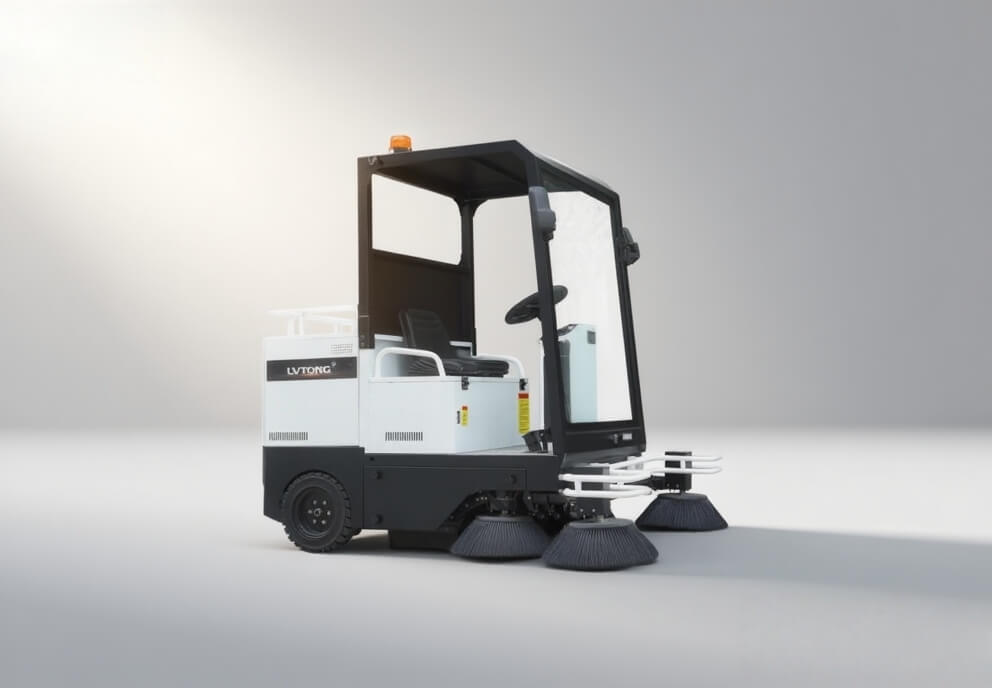
User Needs
High Efficiency
Users in industries like e-commerce and logistics are increasingly demanding higher cleaning efficiency. Industrial floor sweepers can complete cleaning tasks more efficiently and conveniently. Intelligent scheduling systems enable multi-machine collaboration and cross-regional operations, further improving overall efficiency.
Security
In the future, industrial floor sweeping machine will be equipped with more comprehensive safety features, such as 360-degree obstacle detection, emergency braking systems, and explosion-proof designs (suitable for hazardous environments). In addition, data security and privacy protection will also become the focus of user attention.
Talent shortages in areas such as AI and the Internet of Things may hinder industry development. Companies need to strengthen talent development and recruitment, and establish partnerships with universities and research institutions.
Integration and Compatibility
Industrial floor sweepers will no longer be isolated devices, but will need to be seamlessly integrated with the company's existing management systems (such as ERP, MES) or other IoT devices (such as AGV, smart security systems). Open APIs and standardized communication protocols will become essential features of products.
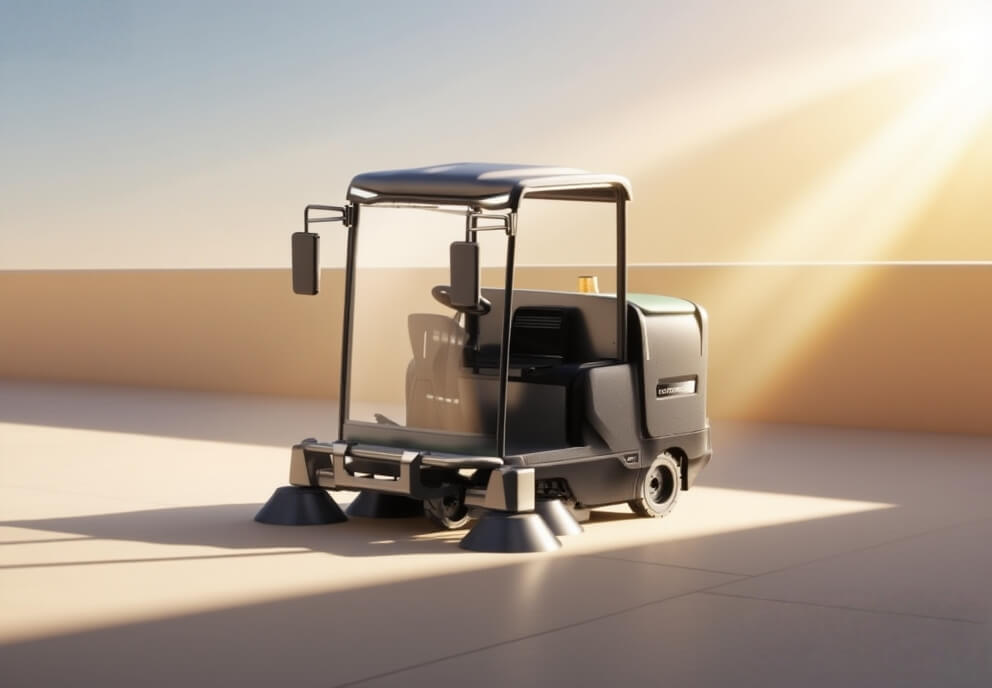
Challenge
Technical Challenges
In complex environments, issues such as robot vacuums' reliability, navigation accuracy, and multi-machine collaboration still need to be addressed. Companies need to increase R&D investment and collaborate with research institutions to overcome technical bottlenecks.
Cost Pressure
The application of high-end technologies may lead to higher product costs. Manufacturers need to lower the user threshold through large-scale production, supply chain optimization and innovative business models.
Talent Shortage
Talent shortages in areas such as AI and the Internet of Things may hinder industry development. Companies need to strengthen talent development and recruitment, and establish partnerships with universities and research institutions.
Education
Many potential users still have a traditional understanding of industrial floor sweepers, and the industry needs to work together to promote market education and demonstrate the advantages and value of intelligent equipment.

Conclusion
After the above multi-dimensional analysis, we can foresee that industrial sweeper machines will move towards a more intelligent, efficient and green future driven by technological integration, market expansion, policy support and upgrading of user needs.


